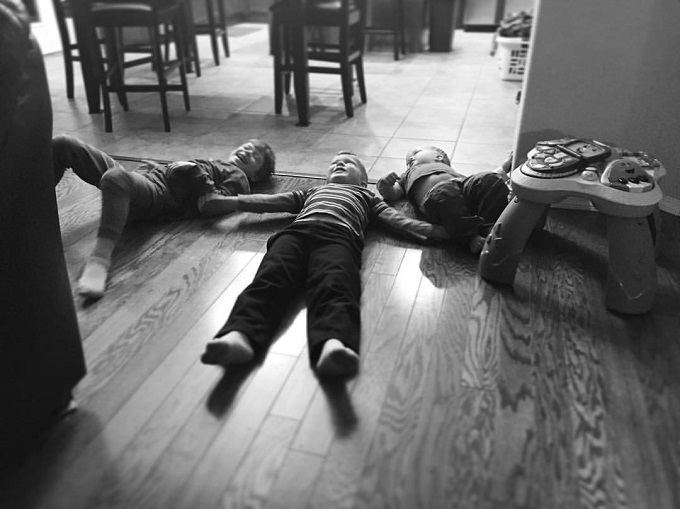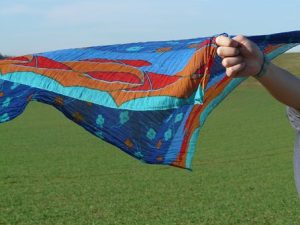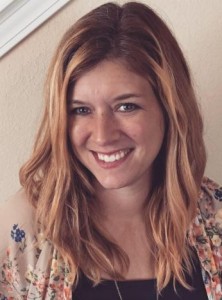Guest post by Jessica Peresta, The Domestic Musician
For several years, I taught elementary music for Tulsa public schools, taught private piano lessons, and played as an accompanist for Tulsa Children’s Chorus and Boston Avenue children’s choir.
I had our first little boy and went back to work, found out my school would be closing at the end of that current school year, found out my husband would be starting a new job at Walmart and we would be moving to Northwest Arkansas, and THEN found out I was pregnant with our second little boy.
After moving here and going on to have yet another little boy a couple years later, I felt ready to shift back into teaching music and wanted a way for me to still teach, yet be able to stay home with my little guys.
I have several homeschool mom friends who would ask me questions about what to do with the music portion of their curriculum or stay at home moms who wanted music ideas who just wanted general music ideas for the home. I also knew of several schools that had no music program and it broke my heart because the benefits of a quality music education are so important. So…The Domestic Musician site was born and I couldn’t be more excited.
I started my blog as a way to bring music into any home or school that needs it, wants it, or can benefit from it. I have music education videos recorded and plan to launch a beginning piano course in the next few months. Music teachers in the schools and private lesson instructors are doing amazing things and I support them wholeheartedly. My goal is to offer another option for those who would rather learn online from the
comfort of their own homes.
Teaching music is my passion and there are so many benefits of learning music. Music is a universal language that anyone can understand. It is so awesome to me that anyone can listen to the same piece of instrumental music, no matter what their spoken language is, and can hear the same
sounds and experience similar feelings.
- Kids who struggle in other academic subjects, like math or reading, can feel successful when participating in music.
- Any sporting event, movie, commercial, or even shopping in a store would be so bland without music to listen to an experience.
- Music can be found in science, math, reading, writing, foreign language, and social studies. From the science of sound, to counting rhythms, to following a music score that includes notes and words, to learning rhyming poems, to learning an opera in another language, to the study of the composers who have come from all around the world.
- Music uses parts of the brain where attention spans and predicting things are involved.
- Music helps children express themselves and experience feelings they didn’t know they had.
 So have you always wanted to incorporate music into your home, but you don’t know what to do? I think so many parents do not realize how simple teaching music to their kids can be. Everyday household objects can be used as instruments, music can be sang, and music can be danced
So have you always wanted to incorporate music into your home, but you don’t know what to do? I think so many parents do not realize how simple teaching music to their kids can be. Everyday household objects can be used as instruments, music can be sang, and music can be danced
to. I have listed below some simple music tips that are simple to implement in any home.
Sing:
 While rocking your baby, sing a simple lullaby or any song, really. It is so neat when you hear the baby cooing back to your song. Toddlers and preschoolers love to sing simple songs.
While rocking your baby, sing a simple lullaby or any song, really. It is so neat when you hear the baby cooing back to your song. Toddlers and preschoolers love to sing simple songs.
Ideas include “Old McDonald had a Farm”, “Twinkle Twinkle Little Star”, “If You’re Happy and You Know It”, “This Old Man”, and “The Itsy Bitsy Spider”. As a parent, teach the child the motions to the song and sing right along with them. I promise you that your child doesn’t care what you sound like or what you look like. They WILL love the interaction and being able to experience music with you.
Sing a story. What I mean by this is, instead of reading a book, sing a book. Make up a simple melody and sing the words. My kids love doing this with me and they think they are writing their own song.
Sing about life. While doing laundry, eating, playing, going on a walk, washing dishes, or anything else going on in your daily life, make up a song! It makes life so much more fun. One day we were eating lunch, and my kids and I made up a silly song all about sandwiches and chips and I heard them singing it the rest of the day.
Play your child’s favorite song on the radio and sing right along with it. Some kids may be shy or afraid to sing because they don’t think they sound very good. Here’s the deal. Your child’s singing voice can be developed, it just takes time. Don’t push it. I’ve seen students go from not being able to carry a tune in a bucket, to being in the honor choir. If a child has never experienced hearing themselves sing, it is unfamiliar and with time, they will be belting out a tune at the top of their lungs.
Move:
Have a dance party. My kids and I love to play music and dance all over the house. It is so fun to see them let their hair down and the creative dance moves they come up with. They LOVE to see me dance with them too. Another fun activity to do is to play freeze dance. This is when your child dances, you pause  the music and they have to freeze until the music plays again. Kids love this game and it is a perfect rainy day activity.
the music and they have to freeze until the music plays again. Kids love this game and it is a perfect rainy day activity.
Give your child a scarf. Tell them to experiment with moving it high, low, fast, and slow and they can twirl it around, wiggle it, or wave it.
Make your body the instrument. Kids can pat their legs, snap their fingers, clap their hands, or stomp their feet to the music. While listening to a song, call out a different body percussion for the child to use. They could also walk around the room while doing these different body percussions.
Play:
Play music with household items. Give a baby some wrapping paper. They will love hearing the different sounds crinkling the paper makes. Household items to play as instruments are: plastic bowl and spoon, metal spoons that can be hit together, the floor with a spoon, a bucket used as a drum, rice put in a plastic bowl with a lid can be used as a shaker, and rubberbands on a kleenex box can be used as a guitar.
Start music lessons. When your child starts learning to read (usually 5 or 6), is the perfect age to start a music lesson. I usually recommend starting with piano lessons before moving onto guitar, drums, or whatever instrument they choose. The reason why I suggest waiting until 5 or 6 is that the child will be reading music notation and will need to be able to think about several things at the same time: playing the keys, counting rhythms, reading notation, curving hands, proper sitting, etc.
I hope these suggestions help you get started with implementing music in the home. Remember that music does not need to be complicated, it just needs to be experienced. Have fun with it and come up with your own ideas on bringing music into your home.
For more ideas, head over to thedomesticmusician.com.
 MORE ABOUT JESSICA PERESTA: I am a wife, mom of 3 boys, pianist, and music educator. Every child should be given an opportunity to learn music through lessons (traditional or online), home music education, and in the schools. Read more here: website-thedomesticmusician.com (also find me on facebook, instagram, pinterest, and twitter). To subscribe, click here: watch.thedomesticmusician.com.
MORE ABOUT JESSICA PERESTA: I am a wife, mom of 3 boys, pianist, and music educator. Every child should be given an opportunity to learn music through lessons (traditional or online), home music education, and in the schools. Read more here: website-thedomesticmusician.com (also find me on facebook, instagram, pinterest, and twitter). To subscribe, click here: watch.thedomesticmusician.com.

